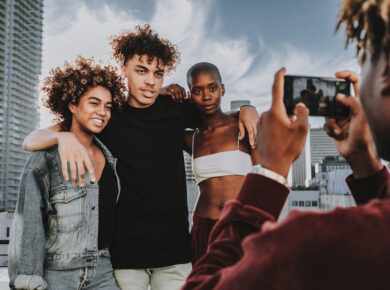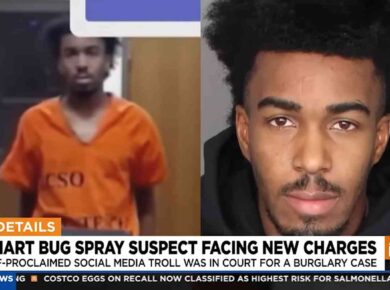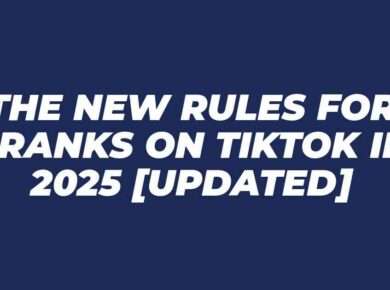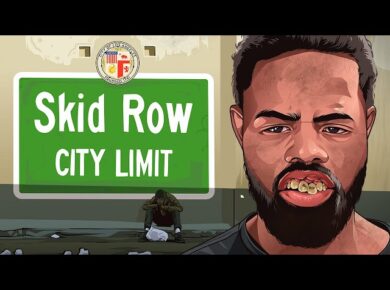Generational differences in social media behavior are more apparent than ever as we head into 2025. Gen Z gravitates towards platforms like TikTok for bite-sized, immersive experiences, while Baby Boomers stick to familiar spaces such as Facebook and email communication. Millennials and Gen X balance trends with practicality, blending Instagram, YouTube, and LinkedIn into their routines. Understanding these habits isn’t just fascinating—it’s crucial for tailoring content strategies and building meaningful connections. Whether you’re a marketer, creator, or simply curious about the shifting landscape, these insights hold the key to engaging effectively across age groups.
The Key Generations and Their Social Media Preferences
Social media usage has evolved into a multifaceted experience, with each generation carving out its own niche in the online space. From Gen Z’s trendy videos to Baby Boomers’ reliance on Facebook, preferences have grown increasingly distinct. Here’s how different age groups are shaping their digital presence in 2025.
Gen Z: Innovators of AR/VR and Short-Form Video
Gen Z continues to lead the charge with their adoption of cutting-edge technologies like augmented and virtual reality (AR/VR). Platforms such as TikTok remain central to their digital lives, offering short, engaging videos that embrace humor, memes, and authenticity. TikTok, for many in this group, has also become an essential source of news, blurring the lines between entertainment and information.
Their preference for immersive experiences speaks volumes. Whether engaging in virtual shopping or exploring AR filters, they prioritize technology that offers interaction and creativity. Gen Z values visual storytelling, and brands looking to connect with this demographic must lean into mobile-friendly, bite-sized content that resonates quickly.
Millennials: Striking a Balance Between Career and Content
Millennials are finding ways to juggle their professional aspirations with their desire for visually appealing content. LinkedIn remains their go-to platform for networking, job hunting, and professional development. Meanwhile, platforms like Instagram and YouTube fulfill their need for experiential content. From travel vlogs to curated lifestyle posts, aesthetics play a significant role in their online behavior.
This generation highly values practicality and personal growth. They integrate social media into their daily routines—not just for entertainment but also for learning and connecting. Whether they’re following a business coach on LinkedIn or watching DIY tutorials on YouTube, their usage reflects a balance between career focus and personal interests.
Gen X: The Hybrid Users
Gen X users are known for their pragmatic approach to social media. Facebook and YouTube continue to dominate their usage, as these platforms offer a blend of functionality and entertainment. For this generation, social media is often a tool for staying informed, connecting with their networks, and enjoying a mix of content formats.
Their adaptability sets them apart. While they are comfortable with traditional platforms, they are not averse to exploring newer trends. This makes them unique hybrid users, toggling between generations by participating in digital trends while sticking to tried-and-true classics.
Baby Boomers: The Loyal Facebook Advocates
Baby Boomers are steadfast in their preference for Facebook, using it as their primary means of communication and connection. It serves as a vital space to stay in touch with family and friends, share opinions, and participate in local or niche communities. Facebook groups and live videos are particularly popular within this demographic.
Though Facebook remains their stronghold, many Baby Boomers are slowly adopting secondary platforms such as Pinterest or even Instagram in 2025. This gradual shift reveals their willingness to explore more visual-friendly platforms while maintaining their loyalty to what they know and trust.
Emerging Social Media Trends in 2025 Across All Generations
Social media in 2025 is shifting to prioritize authenticity, community, and relatable storytelling. These trends reflect the changing demands and behaviors of all generations, making platforms adapt how they engage with users. Below, we’ll explore the key movements shaping this space.
Community-Centric Content and Small-Creator Influence
Platforms are moving away from celebrity-driven campaigns, instead spotlighting smaller, niche creators. Why? Audiences crave relatability and authenticity, and small creators are seen as trustworthy and approachable. These influencers often excel in creating tight-knit, community-driven experiences where every follower feels heard and valued. Whether it’s a food vlogger sharing tips with a few thousand followers or an artist cultivating a dedicated fan base, small creators are building stronger emotional connections.
Brands targeting these creators can see higher engagement rates compared to mega-influencers. Community-centric content fosters loyalty, as audiences feel they are part of something unique. If you’re looking to build a lasting online presence, embracing these community-driven tactics may be the way forward. Check out how influencers like CinnamonToastKen are fostering genuine interactions to expand their impact.
Short-Form, Reality-Themed Content Dominance
Unfiltered, reality-style content continues to lead the pack in 2025. Platforms like TikTok and Instagram Reels are the go-to spaces for culturally relevant and unscripted videos. This isn’t limited to Gen Z—older generations are also drawn to short, easy-to-digest formats that mirror everyday life.
Why does this style work so well? People are tired of overly produced, artificial content. They want to feel like they’re watching something real, unedited, and relatable. By showcasing authentic moments or behind-the-scenes glimpses, creators and brands are building stronger relationships with their audiences. For example, members of Blackpink continue to dominate short-form platforms with their mix of casual, unscripted clips alongside their professional music content.
Employee-Generated Content as a Powerful Marketing Tool
Brands are increasingly leveraging their employees to create organic, authentic content. Unlike polished corporate campaigns, employee-generated posts feel personal and genuine. This approach transforms your team into micro-ambassadors who share their unique perspectives, adding credibility and a human touch to your brand.
Employee testimonials, day-in-the-life videos, and team challenges resonate particularly well, as they provide a peek behind the curtain into a brand’s culture and values. It’s not just about selling a product—it’s about selling authenticity. Companies in industries ranging from tech to retail are seeing success by empowering their employees to share their voices online. For tips on cultivating content that builds trust, visit resources like How to Become a Social Media Influencer in 2025.
By embracing these trends, individuals and organizations alike can remain relevant across the diverse generational spectrum of social media in 2025. How could these shifts reshape your own digital approach?
The Role of AI and Personalization in 2025
In 2025, artificial intelligence is no longer just a buzzword—it’s a key driver behind the evolving ways we interact with social media. AI is reshaping content delivery, tailoring experiences to individual preferences, and sparking conversations across generations. However, while it offers undeniable convenience, not every generation views AI-generated content through the same lens.
AI-Driven Content Recommendations
Artificial intelligence continues to refine how content is delivered, making platforms more intuitive and engaging. Algorithms now go beyond basic user behavior, analyzing everything from viewing habits to interaction styles. This means that whether you’re scrolling on TikTok or browsing Instagram Reels, the content that appears aligns closely with your specific interests.
Key advancements in 2025 include:
- Hyper-specific audience targeting: AI doesn’t just suggest general interests—it pinpoints niche preferences like hobbies, viewing schedules, and even emotional states.
- Dynamic recommendations: Algorithms now adjust in real time. For example, if you watch a series of short-form DIY videos, your recommendations adapt immediately instead of waiting hours or days to change.
- Cross-platform synchronization: Platforms are integrating AI systems to recognize user patterns across multiple apps, offering a seamless, personalized experience.
For creators and businesses, these advancements open opportunities to connect authentically with smaller, focused audiences. However, there’s a fine balance to strike. While personalization can foster a deeper connection, users expect transparency about how their data is used. For more insights on how AI tools influence social campaigns, check out AI-Driven Tools Predicting Influencer Campaign Success in 2025.
Skepticism Toward AI-Generated Content Among Younger Generations
Not all audiences are fully embracing AI-powered personalization. Generation Z, in particular, has become increasingly wary of the authenticity of AI-generated content. Their skepticism stems from a desire for transparency and a growing awareness of how algorithms shape online realities. Younger users are quick to question whether an influencer’s post is genuinely personal or the product of a well-designed AI assistant.
Here’s why Gen Z leads the charge in questioning AI-driven personalization:
- A preference for “real” content: Gen Z values authenticity and can often distinguish between human-created posts and simulated AI outputs. This generation leans toward creators who showcase unpolished, relatable moments.
- Data privacy concerns: Gen Z is acutely aware of data collection practices. They challenge platforms and brands to be clear about how AI curates their feeds.
- Ethical considerations: From deepfake videos to AI-written captions, younger generations are raising concerns about the ethical implications of using AI in storytelling.
For brands, it’s vital to understand these nuances. Simply using AI isn’t enough—it must be paired with genuine, relatable messaging. Without authenticity, even the most personalized content can feel disconnected or manipulative. Creators like Logan Paul – From YouTube Sensation to Multifaceted Entertainer in 2025 illustrate the importance of balancing AI-driven strategies with honest storytelling to maintain trust with younger followers.
By navigating these challenges thoughtfully, brands can harness the power of AI while staying aligned with the values of their audiences. AI may redefine what’s possible, but genuine connections will always matter.
Conclusion
The generational divide in social media usage is more pronounced in 2025, showcasing distinct habits and priorities across age groups. While Gen Z dominates immersive AR and short-form video platforms, Baby Boomers anchor themselves in the familiarity of Facebook. Millennials and Gen X find middle ground, balancing professional growth with creative engagement.
These trends underline the importance of tailoring digital strategies to meet diverse preferences. Whether you’re refining your brand presence or enhancing personal connections, adapting to generational nuances can amplify impact.
Consider how smaller creators, like those thriving in the age of nano-influencers, are reshaping authenticity and trust online. How will you adjust your approach to make meaningful connections across generations?









